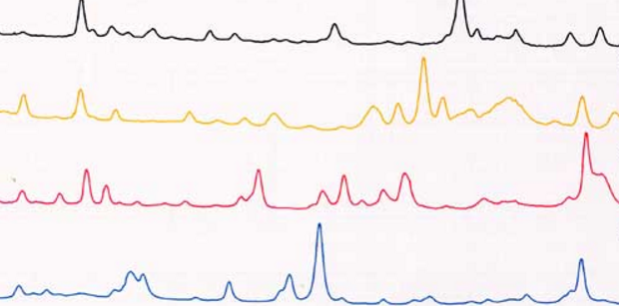Scientists have demonstrated a new method that allows police to quickly predict the contents of suspected drugs packages using Direct Analysis in Real Time mass spectrometry.
When faced with a suspected illicit drug, police officers will not know the identity or potency of the substance. Investigators will often perform something called a presumptive test to indicate what kind of drug they are dealing with. These tests typically involve scooping up a small amount of the material and adding a few drops of a specific chemical reagent to the sample. If the drug is present, a chemical reaction will occur resulting in a distinctive colour change to indicate a positive result.
Unfortunately, these tests can be somewhat hazardous, necessitating both the potential exposure to harmful substances in order to sample the drug, as well as the use of chemicals in the field. This has become particularly problematic in recent years as more uncharacterised and potentially harmful illicit drugs have hit the market. For instance, recent news reports have seen first responders complain of exposure to the drug fentanyl, a particularly potent opioid harmful even in small quantities.
In light of this, the need for rapid, reliable and safe drug screening techniques is greater than ever before.
Researchers at the National Institute of Standards and Technology (NIST) have teamed up with Maryland State Police and Vermont Forensic Laboratory to develop a method of quickly predicting the contents of a suspicious package without the need to handle the contents. We’ve all seen how airport staff check luggage for traces of explosives. They swipe an absorbent material over the surface of the bag, introduce that swab to an analyser, and receive a rapid alert to the presence of specific controlled substances. This new method essentially follows the same process. Upon discovering a package suspected of containing illicit drugs, the investigator simply swipes an absorbent wipe across the surface of the package, and that swab is then exposed to the mass spectrometer.
The new method utilises Direct Analysis in Real Time mass spectrometry (DART-MS) analysis. DART-MS is a form of ambient ionisation mass spectrometry in which the sample is placed between the DART ion source and the inlet of the mass spectrometer, allowing chemical components in the sample to be ionised and drawn into the mass spectrometer for rapid analysis. The major advantage of this technique is that it requires no form of sample preparation, so the sample itself (or in this case a swab of the sample) can be analysed directly for almost instantaneous results. You can read more about how DART works here.
In a study recently published in the journal Forensic Science International, the technique was applied to almost 200 suspicious packages, including plastic baggies, pill bottles, envelopes, and tin foil bags. From these samples, a range of illicit substances were detected, including fentanyl, cocaine, heroin, methamphetamine and synthetic cannabinoids. Also detected on a couple of the packages was carfentanil, a particularly powerful opioid thousands of times more potent than heroin and a great concern for first responders. It was shown that only a few micrograms of drug on the outside of the packages could be detected. The study has successfully demonstrated the possibility of rapidly screening for the presence of harmful drugs such as fentanyl, even when mixed with other substances like heroin. In fact, the contents of the packages were successfully predicted 92% of the time.
This new technique enables police officers to rapidly screen suspicious bags and packages for the presence of illicit drugs, whilst reducing the risk of exposure to harmful substances. By quickly and safely predicting the contents of a package, steps can then be taken to ensure the evidence is processed under appropriate conditions, for instance in a laboratory fume hood and with appropriate protective equipment. Although a complete analysis by standardised laboratory methods would still be required for legal purposes, this new technique at least allows for the rapid, and safe screening of suspected drugs.
Sisco, E. Robinson, E. L. Burns, A. Mead, R. What’s in the Bag? Analysis of Exterior Drug Packaging by TD-DART-MS to Predict the Contents. For. Sci. Int., 2019, In Press.








